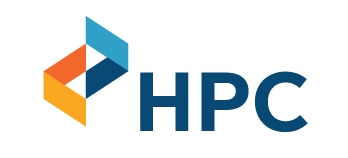- Massachusetts Health Policy Commission
Media Contact for HPC RELEASES NEW ANALYSIS OF THE EFFECT OF THE OPIOID CRISIS ON ACUTE HOSPITAL USE
Matthew Kitsos, Press Secretary
Boston — Today, the Massachusetts Health Policy Commission (HPC) released new data in a chartpack examining the use of acute hospital emergency department (ED) and inpatient utilization by patients with opioid-related diagnoses. Accompanying this chartpack is the latest issue in the HPC’s DataPoints series, mapping opioid-related acute care utilization trends in 2012, 2016 and 2017. The chartpack builds on the HPC’s 2016 report, Opioid Use Disorder in Massachusetts, and a 2017 chartpack, Opioid Use Disorder Report Update.
While Massachusetts continues to experience high rates of opioid-related injury and death, recent evidence suggests that the impact of the opioid epidemic is moderating. According to the latest quarterly data released from the Massachusetts Department of Public Health (DPH), the opioid-related overdose death rate in Massachusetts declined from 2016 to 2018, falling an estimated four percent.
“While we are encouraged that opioid-related overdose deaths have declined over the last two years, we remain focused on targeted prevention, treatment, intervention and recovery strategies to end the Commonwealth’s opioid crisis,” said Health and Human Services Secretary Marylou Sudders. “We continue to work with local officials and other stakeholders, particularly in cities and towns that experienced an increase in opioid-related deaths last year.”
To complement the surveillance work conducted by DPH, and to provide further data-driven insights into the changing nature of the opioid epidemic, the HPC regularly reports on opioid-related acute care hospital use in the Commonwealth. This chartpack includes the most recent available data through 2017. The chartpack also includes updated data on the number of infants born with neonatal abstinence syndrome (NAS), a diagnosis that is growing in prevalence due to the increased rate of in utero exposure to opioids, and of substance exposed newborns.
The HPC analysis shows that after several consecutive years of substantial double-digit annual increases, the statewide rate of opioid-related hospital utilization in Massachusetts declined slightly (-2.3%) between 2016 and 2017. This is the first decline observed since the HPC began tracking these rates in 2010. The rate of NAS or substance exposure in newborns also decreased 6% over the same time period.
The overall rate, however, remained high compared to other states. Further, not all subpopulations within Massachusetts experienced a reduction, and opioid-related hospital use remained highly variable by patient age, income, sex, race/ethnicity, and geographic region. For example, the rate of opioid-related hospital discharges moderated for younger adults in 2017, but continued to increase among those identified in the data as Black/African American, and some older age groups.
“Despite recent positive trends indicating the statewide rate of opioid-related deaths and hospital use is decreasing in Massachusetts, significant challenges endure for many patients and communities,” said David Seltz, HPC Executive Director. “The HPC remains dedicated to working collaboratively with the Baker-Polito Administration and other public and private stakeholders to improve the health care system’s ability to care for all individuals with opioid use disorder in the most appropriate setting.”
Key findings from the chartpack:
- From 2016 to 2017, the death rate from opioid overdoses declined by 3%, and opioid-related hospital discharges fell by 2.3%, the first decline seen in these data. While the opioid-related death rate in Massachusetts decreased between 2016 and 2017, it is still nearly twice that of the national average.
- In 2017, most patients who were discharged from an ED with an opioid-related diagnosis had only one such visit during the year. However, patients with multiple ED visits accounted for more than half of all opioid-related ED visits.
- Opioid-related ED use remains highly variable by region, with Fall River and Metro South having roughly three times the rate of Metro West.
- Between 2012 and 2017, opioid-related discharges for patients living in areas of the state with the lowest income quartile increased twice as fast as they did in areas with the highest-income quartile. By 2017, 40% of discharges were for patients living in the lowest income areas.
- From 2016 to 2017, the opioid-related hospital discharge rate declined in the under-35 population, dropping most significantly for individuals between the ages of 20-25 (24% decrease), but increased among older adults.
- Across all individuals with race identifiers available in the data, the rate of opioid-related discharges increased by more than 50% between 2012 and 2017; the rate among those identified as Black/African American increased by 98%. From 2016 to 2017, while the rate fell among those identified as White and Hispanic, it rose by more than 5% among those identified as Black/African American.
- From 2016 to 2017, the rate of neonatal abstinence syndrome (NAS) or substance exposure in newborns decreased from 26.5 to 25 per 1,000, mirroring the decrease in both opioid-related mortality and hospitalizations over the same time period. While the NAS diagnosis rate decreased, the total number of infants born “substance exposed” was significantly higher in 2017 than in 2015. This could be due to coding changes or improvements in clinicians’ ability to identify these conditions.
The HPC has funded several investment programs that aim to improve care for individuals with opioid use disorder (OUD). Numerous initiatives in the Health Care Innovation Investment (HCII) program serve patients with an OUD, including the Mother and Infant-Focused Neonatal Abstinence Syndrome (NAS) investment program, which improves or enhances inpatient care for infants born substance exposed. The HPC’s newly launched SHIFT-Care Challenge supports nine hospitals offering ED-based buprenorphine initiation, providing naloxone to patients with OUD, and connecting them to outpatient treatment.
###
